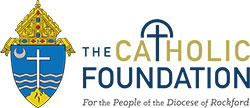How to Open an Endowment Account
There are two ways that accounts are established in The Catholic Foundation: 1) an individual donor leaves a bequest, a charitable annuity remainder, life insurance or some other form of a planned gift and designates the gift as an endowment to perpetually benefit a parish or diocesan entity; 2) leadership from a parish or diocesan entity decides to establish an endowment account to accomplish a specific purpose.
In the case of an individual leaving an endowment to a specific parish or diocesan entity which does not have an existing account with The Catholic Foundation, the procedures listed below are applicable except for the initial decision to establish an account and for those aspects relative to the intentions of the donor.
The following steps outline the process for voluntarily establishing an account in The Catholic Foundation:
1. Identify the Need to Create an Endowment
Parish/Diocesan leaders understand that many donors wish to endow their cherished charity — their church — but do not know how to go about doing that. Many other parish leaders see the necessity for having a revenue source that will benefit the parish or diocesan entity into the future. These leaders make a conscious choice to use memorial monies, bequests or other revenues to establish an endowment account. Pastors and Diocesan Directors who wish to establish endowment accounts must consult with their Finance Council or appropriate supervisory authority before action can be taken.
2. Define a Purpose
Leaders need to define for each account a clear purpose for which the earnings will be used into the future. While the purpose should be clear, it should not be overly restrictive. Some examples are for: The Mission and Ministries of a Specific Parish, Parish Catholic Education, Parish Cemetery, Capital Improvements, and so on.
3. Decide the Investment Objective for the Account
The Catholic Foundation utilizes a Total Return distribution method. All current earnings (the amount which exceeds historic dollar value or corpus annually on June 30) are placed into a related retained earnings account. The participant may choose to retain the earnings (keep the earnings invested for future withdrawal), place all or a portion of the earnings back into corpus to protect the spending power of the account to compensate for inflation, or withdraw all or a portion of the earnings. Withdrawals from retained earnings accounts may be requested at any time, but are limited to once per account per quarter. The participant directs how funds are invested by choosing between three available investment funds. If a participant’s primary objective is for dependable income for current operational budget needs, then the Income Fund is recommended. If a participant’s objective is a combination of growth and modest income, the Balanced Fund is recommended. If a participant’s objective is long-term growth with no immediate need for income and would like to engage a long-term strategy for maximum growth, then the Growth Fund is recommended. Note that a retained earnings account may utilize an investment fund that is different than the one chosen for the related corpus account. For example: corpus, by definition, is a long-term investment since corpus can never be withdrawn. Therefore, a participant may want to consider a more aggressive investment fund (Growth or Balanced Fund) for the corpus account and a more conservative investment fund (Income or Balanced Fund) for the associated retained earnings account, since retained earnings are frequently earmarked for withdrawal within a shorter time-frame (say 3 to 5 years).
4. Determine the Initial Amount to be Deposited
The Catholic Foundation accepts checks payable to the “The Catholic Foundation.” In the memo section identify the name of the account. Securities may be directly transferred to The Catholic Foundation through our investment consultant, Wells Fargo Advisors. Please contact us as instructions vary depending on the security type (stock or mutual fund). All deposits are applied to account corpus. Deposits can not be made directly to retained earnings accounts.
5. Complete the Necessary Documents
The process begins with an application form. An account will be initially established with the acceptance of the application and the transferred assets (check or stock transfer). Formal establishment of the account will occur when the “Participant Agreement” has been executed by participant leadership. Participant leadership includes the Pastor or Diocesan Department Director and a person, such as the Finance Council chair, who has a consultative role in the financial affairs of the participating entity. (This latter signature is necessary to document that appropriate consultation has occurred.) One original set of executed documents will be placed in the Foundation files, the second original set will be returned to the participant for their files and a copy of the documents will be placed in the Diocesan Archives.
